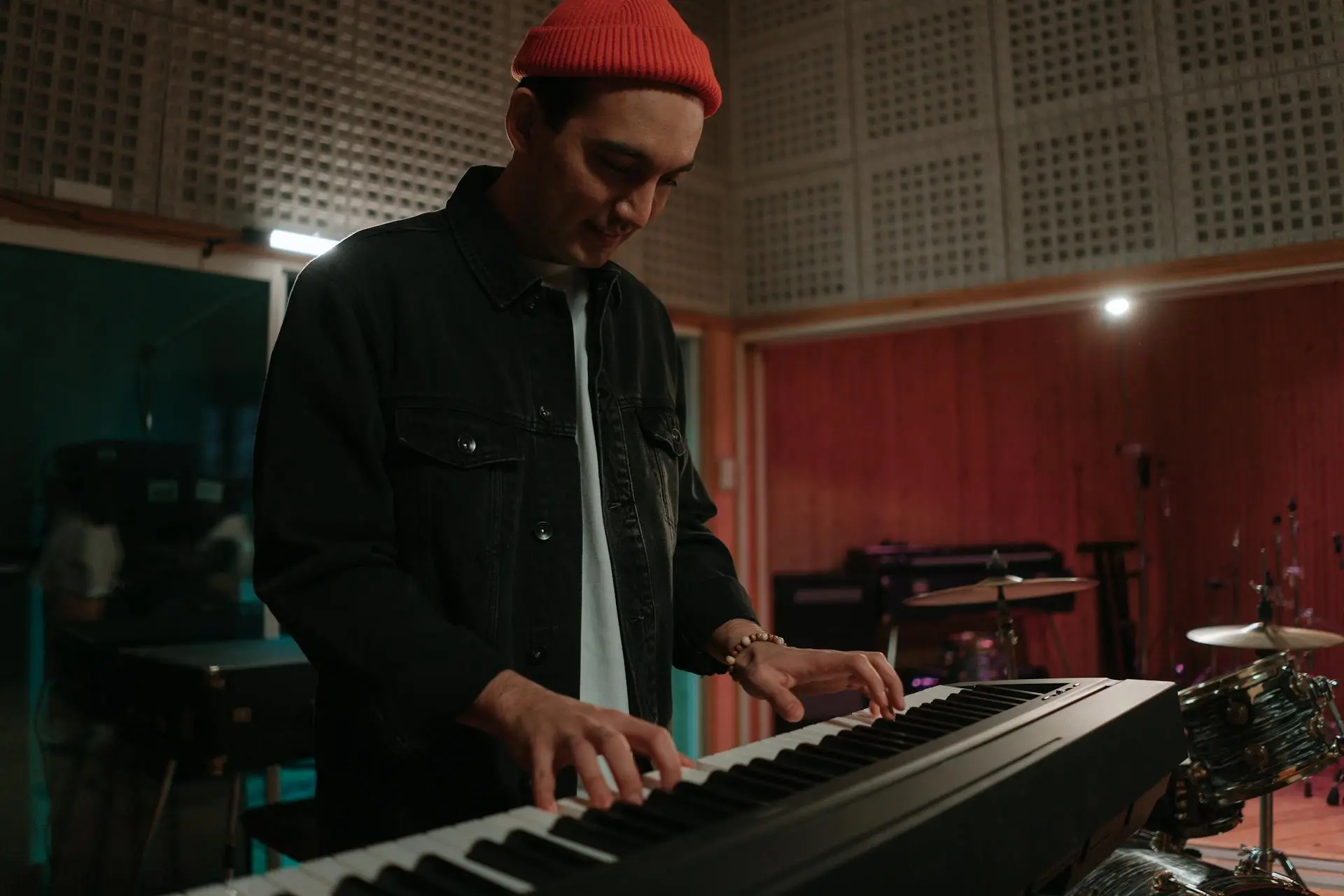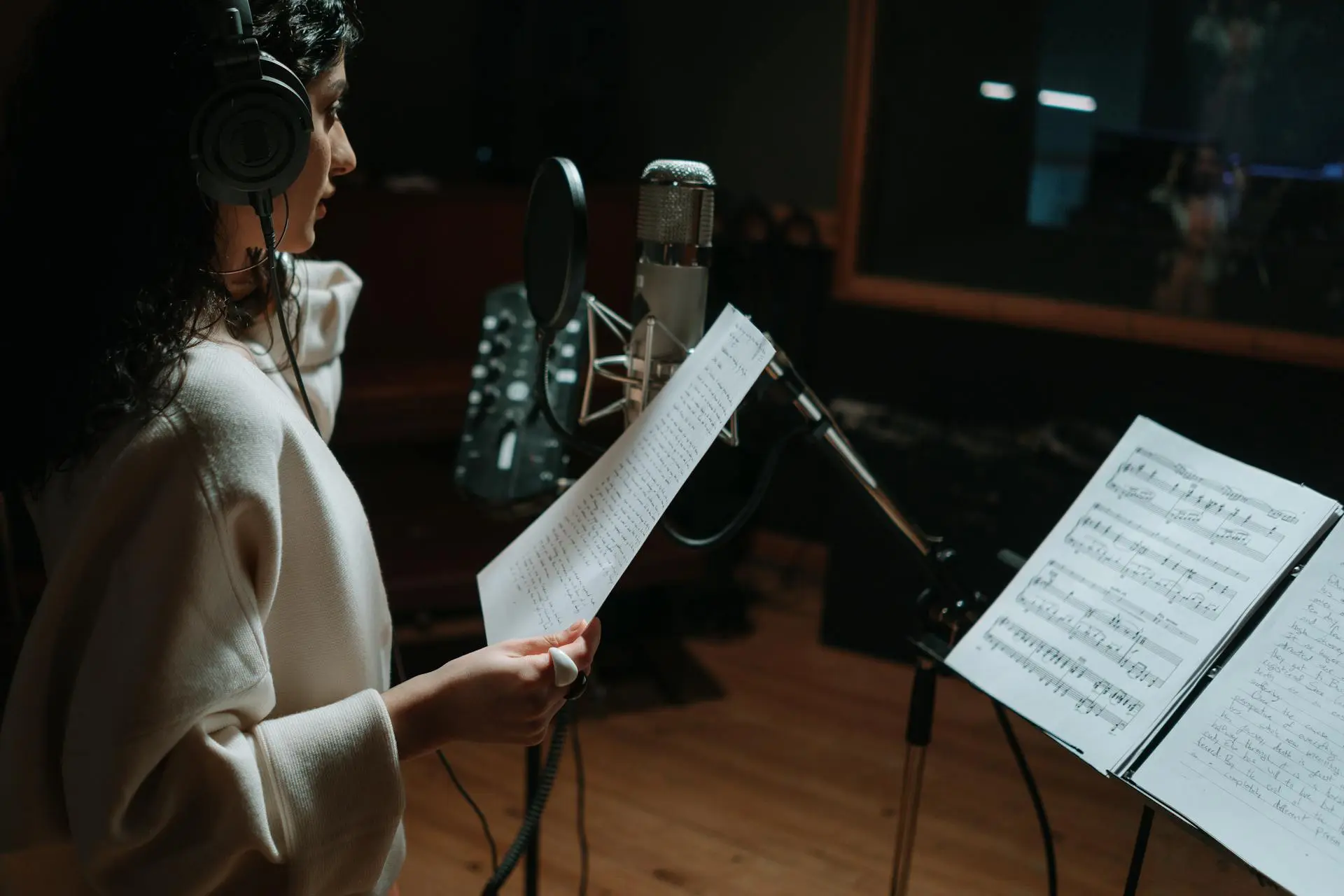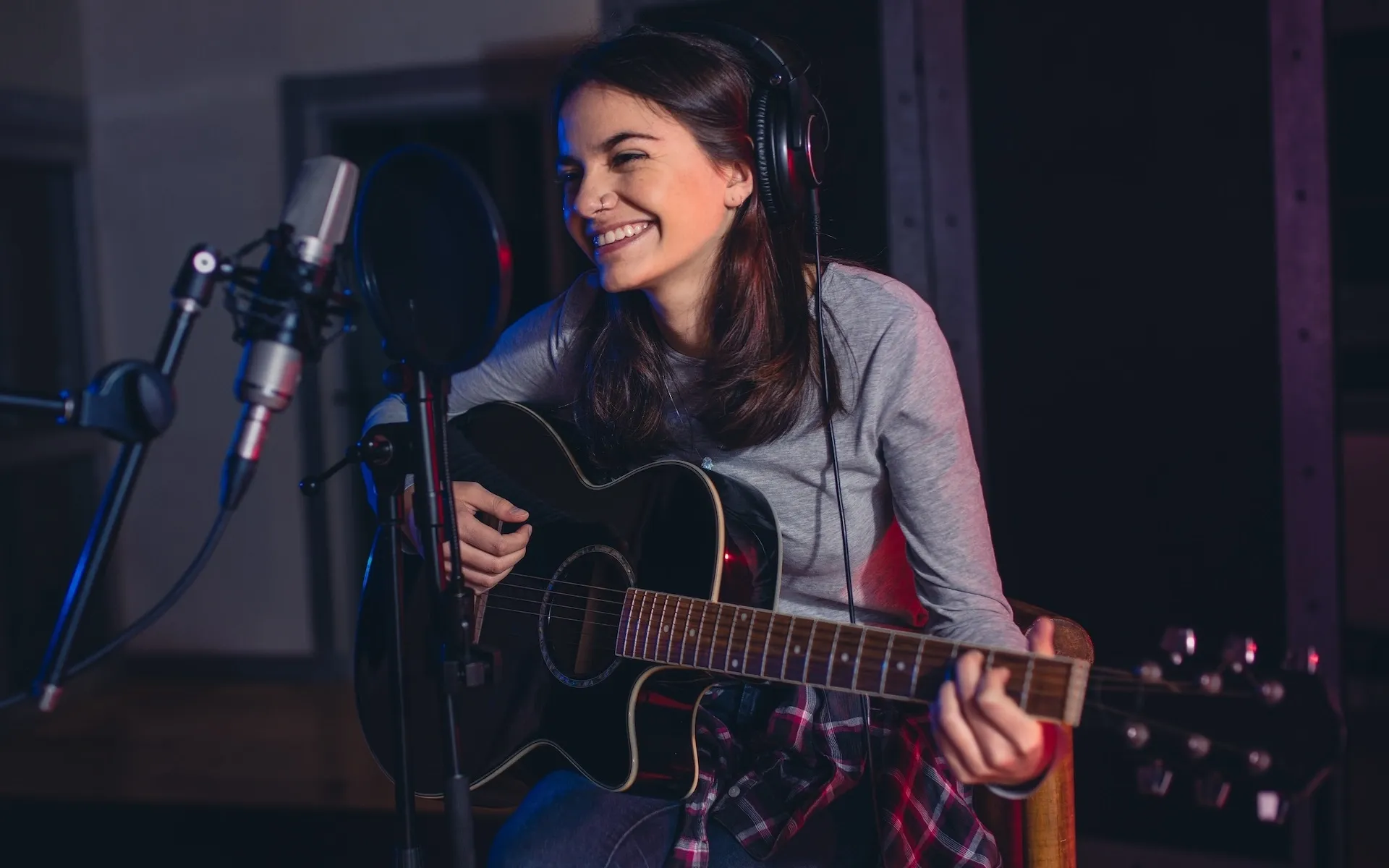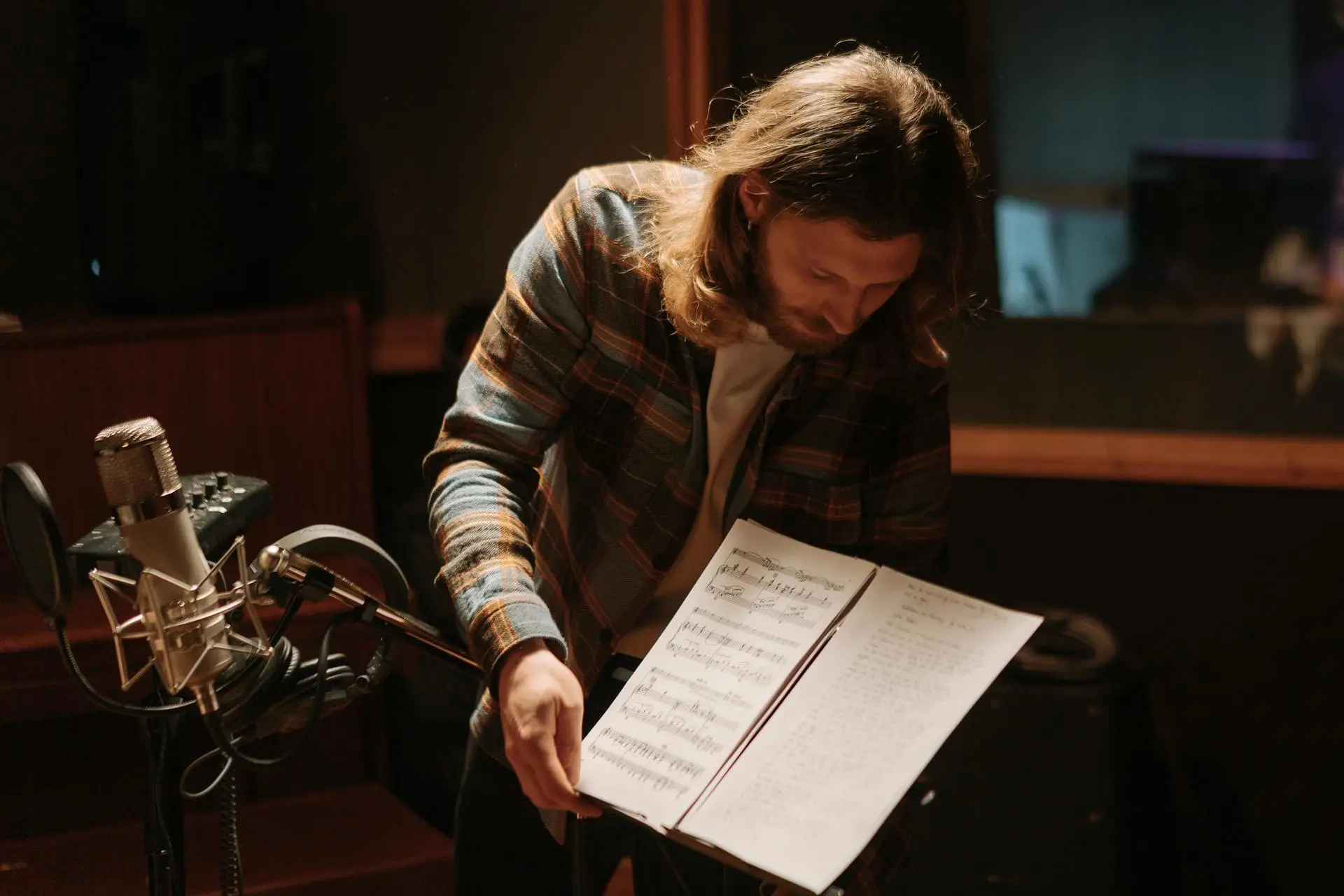What is a leitmotif?
Leitmotifs pop up in all kinds of soundtracked content. Learn what they are, how they differ from musical themes, some best-in-class examples, and more.

Leitmotifs can add an extra dimension to your content. But what exactly are they, where do they come from, and what are some of the most famous examples? Let's run through all of that today.
We’ll cover:
- What is a leitmotif?
- Where do leitmotifs come from?
- Do leitmotifs evolve?
- How long should a leitmotif be?
- What’s the difference between a theme and a leitmotif?
- What’s the difference between a motif and a leitmotif?
- What are the best examples of leitmotifs?
What is a leitmotif?
A leitmotif is a short, recognizable musical phrase within a larger piece, used to represent a specific person, place, or idea. Leitmotifs show up in all kinds of content, most recognizably in film scores — the leitmotif will play when a certain character or place appears.
Leitmotifs are used to bolster the narrative, provide extra context, and call back to previous events or characters. While you’d usually associate a leitmotif with a few notes forming a melody, they can also be represented through rhythm alone.

Where do leitmotifs come from?
'Leitmotif' stems from the German word leitmotiv, which becomes ‘leading motive’ when translated into English. Its roots can be followed to the 17th and 18th century, with composers like Monteverdi and Mozart using short, repeated musical phrases in their work.
The term was coined in 1871 by the critic Friedrich Wilhelm Jähns, but was popularized in practice a few years before, by the renowned opera composer Richard Wagner. His famous Ring Cycle, which comprised four operas between 1863 and 1869, used leitmotifs to represent onstage characters and ideas — literally hundreds of them. His works became famous for offering these musical shortcuts, using leitmotifs as narrative cues.
Nowadays, leitmotifs are most often found in film scores. We’ll discuss a few of the most effective examples shortly, but if you’ve ever seen a film scored by John Williams — think of all the big Spielberg hits, or Star Wars — then you’ve heard some of the most iconic leitmotifs ever.
Do leitmotifs evolve?
Leitmotifs are linked to characters, but hey — people change. If you’re shooting a web series about a good detective gone bad, their leitmotif can reflect that.
Let's say that your leitmotif is a chord progression. The rhythm or pitch could change, or you could pile on extra instrumentation. It could flip from major to minor, it could slow down — it could even be played on a different instrument. As long as you plant the leitmotif in viewers’ heads early on, you can play around with it.

How long should a leitmotif be?
There’s no hard and fast rule for how long a leitmotif should be, but if you remember one thing, it’s this: someone else has to remember it. A leitmotif’s purpose is to link the music with a specific thing — it’s hard to do that if it’s overly long, complicated, or generic.
For this reason, a leitmotif should ideally last more than one note. If it’s too short, it may not be memorable — if it’s too long, viewers may just associate it with your content’s soundtrack or score. Experimenting with how the leitmotif plays against your content, then seeing how viewers react, will help you gauge the length.
What’s the difference between a theme and a leitmotif?
A musical theme is a longer, broader piece of music, usually expressing a certain plot point or atmosphere. A theme can include leitmotifs — like the John Williams example we’ll discuss shortly — but isn’t tied to a character or place. Rather, a theme represents the narrative’s mood.

What’s the difference between a motif and a leitmotif?
You might hear leitmotif and motif used interchangeably, but there is a difference. As we’ve covered, a leitmotif is a short piece of music tied to a specific person, place, or idea — when the leitmotif hits, the audience knows what it means.
On the other hand, a motif is a short musical idea that appears throughout a piece. It can be a riff, vocal melody, drum pattern, or some other kind of repetition — several different motifs can exist within the same track, and can be developed.
While they’re usually thematic, motifs don’t always signify a specific person, place, or idea like leitmotifs do. In that sense, all leitmotifs are motifs, but not all motifs are leitmotifs.

What are the best examples of leitmotifs?
Now that we’ve learned what a leitmotif is, where they're used, and how they differ from similar musical ideas, let’s take it home with some best-in-class examples.
Akira Ifukube – Godzilla (1954)
Max Steiner’s 1933 King Kong leitmotif broke new ground, being the first modern-day ‘talkie’ film to introduce leitmotifs. However, it’s the scalier, meaner monster movie that left a bigger musical footprint.
Akira Ifukube’s Godzilla leitmotif is so iconic, so huge, that it’s still reused in new Godzilla movies seventy years later. Head 25 seconds into this trailer for 2023’s Godzilla: Minus One and feel the weight of that thing.
John Williams – Star Wars (1977)
It's the sound of pure evil, isn’t it? Whenever that ‘Dun! Dun! Dun!’ rolls in, you know what’s up — Vader’s in town. John Williams terrified audiences with his 1975 Jaws score, and he did it two years later with George Lucas’ Star Wars. Even in the prequels, when Vader as we know him isn’t present, The Imperial March is used to draw parallels to him. Truly spine-tingling stuff.
James Horner – Titanic (1997)
We all know Celine Dion’s My Heart Will Go On: the soundtrack to many a broken heart, tears wept, photos of exes ceremonially burned. That song was composed by James Horner, whom James Cameron hired to soundtrack his 1997 blockbuster, Titanic.
The main melody to Dion’s hit runs underneath the movie, most notably in scenes between Jack and Rose. As their relationship blossoms, the melody ebbs and flows, but every time it plays, it’s tugging at a certain angle on your heartstrings.
If you need to find leitmotifs for your content, don’t settle for second-best. After all, bad music kills good video.
Our catalog is high-quality, affordable, and safe. An Epidemic Sound subscription goes beyond royalty-free music, removing the headache of licensing and freeing you up to do what you do best. You can enjoy the safety of our license hand-in-hand with our massive catalog of 40,000 tracks, covering just about every genre you can think of. You’ll also gain unlimited access to our advanced search functions — finding the right sound’s never been easier.
It’s better than royalty-free. It’s worry-free. Get started with Epidemic Sound below.

Are you a filmmaker? We've got you covered with background music for videos, including:
Take your video editing to the next level with our massive catalog of music for filmmakers.

